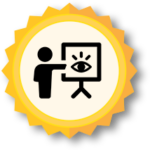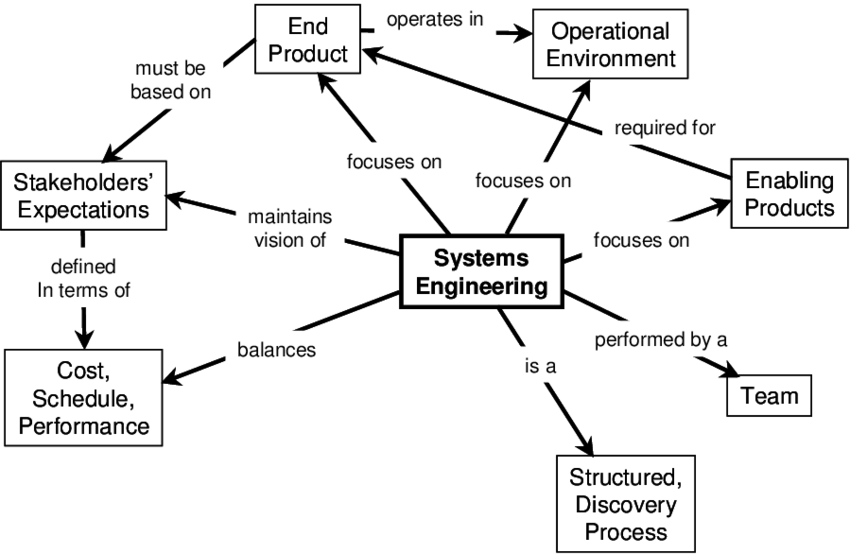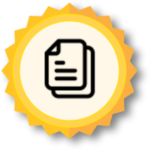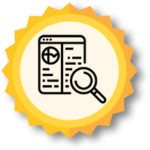Concept Maps
 Overview and Introduction: The WHAT and WHO
Overview and Introduction: The WHAT and WHO
Concept mapping is a method for educators and students to see the meanings of learning materials by portraying the connections between ideas, concepts and terms. Concept maps are a cross-disciplinary, active learning technique that help students manage concepts into sub-concepts, synthesize information, see a larger picture and develop higher-order thinking skills and strategies [1]. For faculty, concept maps provide a method to quickly understand students’ thought processes and understanding of concepts. It is a physical product where students determine the relationship between ideas and connect them together with lines, using descriptive words and phrases. It is common for students to identify multiple relationships between concepts.

Concept and Mind maps may look visually similar, but they are different [2]. A mind map is a visual of data and information about one topic/concept/idea, typically presented in a diagram, whereas a concept map represents an abstraction of a complex problem by showing relationships between multiple concepts or ideas.
Beginning General Structure of Concept Maps-Hierarchy Structure [3]
- Distinguish the most general lesson content ideas/concepts and place at the top of the document
- Identify more specific concepts and place them under the general concepts
- Use linking words and phrases to connect specific concepts to the general concepts
- Look for additional relationships and add to the map and make further connections
The use of concept maps can be used in a variety of courses, modalities, and learners.

 Implementation and Timing: The WHEN, WHERE, and HOW
Implementation and Timing: The WHEN, WHERE, and HOW
Acquainting students early in a course on concept maps will help them best understand how to structure and format them. This in turn may assist students in spending less time formatting the maps as the course progresses and spend more time wrestling with the course content [3].
In regards to how concept maps can be used, it varies depending on how you wish to use it. Potential uses include:
- Brainstorming. This can be independently or in groups, students gather ideas/concepts/solutions and sketch out how they are related.
- Summarizing and connecting course content. Throughout the lecture, stop and allow students time to add any information from the lesson to the concept map. Give them a short amount of time to discuss connections.
- On-going creation. Students add to the concept map over time, continuously making connections.
- Assessments. Students build concept maps and add a written reflection to show their understanding of the content.
- Lab write ups. Students can include concept maps in their lab analysis portion with further written explanation.
- Unit reviews. Students can create these to review material before major assessments
Concept maps are applicable to all class contexts; virtual courses, in person, and large enrollment courses. One of the most important aspects of concept mapping is asking yourself, what do you want the students to be able to do with the maps?
Linking phrases
The terms and ideas on concept maps are linked by words and phrases. “Choosing linking words is one of the most difficult and yet, most important parts of creating a concept map. Whatever linking words the learner chooses will change the relationship between the concepts. To take a simple example, if as in Figure 2, a learner indicates that trees grow leaves one meaning is portrayed [3].” Notice in Figure 3 how the meaning changes because the learner changed the linking phrase to ‘drop.’

Steps for Implementation
- Determine how you will use the concept maps to support students. Share an example of what the map might look like (something they are familiar with) so they understand the expectations. Explicitly explain and teach concept maps: purpose, variables, how to use linking phrases to show relationship between variables, direction of arrows, number of connections, etc. Model a concept map for them and think aloud as you connect ideas. Focus on the creation of concept maps in the beginning. Consider including word banks of terms and ideas for students. Remind students that organization may change as they continue to add more information.
- Encourage collaboration. Allow students to collaborate and create group concept maps. This help students better understand the concepts and the overall process. Students can explain and critique each other’s concept maps Students can write short explanations regarding their concept map (possibly including what changes they have made to their concept map and why)
- Be sure to have clear assessment criteria and grading developed so that grading is not as time-consuming or subjective. Possible grading criteria could include: Completion, Complexity (integrations and synthesis of different kinds of knowledge), Cause and Effect (understanding of how elements of an ecosystem are connected), Specificity of Understanding (specific details and examples are included), Depth of Understanding (a broad enough sample of concepts is included), or Peer critiques of the map with no grading at all. A few possible grading considerations:
- Count correct connections and students could earn a total amount of points: 1 point for each concept, 2 points for each appropriate link
- Checklist: Consider if they have certain concepts, links are correct and logical, text is clear and easy to read, information is clear, etc.
- Rubric: Criteria could include organization, links, ideas, communication, teamwork, etc.
- Remember that the maps represent the thinking of students so it might be valuable to have students write a reflection of their concept map so that you clearly understand their thinking.
- Use them regularly. As students become more familiar with the structure, they can begin to focus more on content. Give them time to become acquainted with the thinking behind concept maps.

 Rationale and Research: The WHY
Rationale and Research: The WHY
Concept maps are an open-ended way for students to demonstrate their knowledge by identifying relevant concepts and documenting relationships between concepts [5]. Concept maps require deeper levels of thinking, rather than focusing on simply recognizing and recalling information. The learner is tasked with differentiating concepts and how they relate to one another [3]. This type of organization can promote the use of higher order thinking skills such as analysis, synthesis and evaluation [4]. Students who have reported feeling challenged creating and using concept maps have had better overall course grades [6].

 Additional Resources and References
Additional Resources and References
Interested in learning more? Below are citations and links to articles referenced in this document.
[1] Tomaswick, L. and Marcinkiewicz, J. (2018). Active Learning – Concept Maps. Kent State University Center for Teaching and Learning
[2] Frey, C. (2021, January 31). Concept maps vs. mind maps. Mind Mapping Software Blog. Retrieved August 10, 2022, from https://mindmappingsoftwareblog.com/concept-maps-vs-mind-maps/
[3] Daley, B. J. (2010). Concept maps: Practice applications in Adult Education and human resource development. New Horizons in Adult Education and Human Resource Development, 24(2-4), 31–37. https://doi.org/10.1002/nha3.10383
[4] Zhu, H., & Ganesh, T. G., & Sonnier, C. (2019, June), Studying Changes using Concept Maps in First-Year Students’ Understanding of the Engineering Design Process Paper presented at 2019 ASEE Annual Conference & Exposition , Tampa, Florida. 10.18260/1-2–33320
[5] Mcdaniel, R. (1970, June 10). Bloom’s taxonomy. Vanderbilt University. Retrieved August 11, 2022, from from https://cft.vanderbilt.edu/guides-sub-pages/blooms-taxonomy/
[6] J. M. Bernstein, “Concept mapping and student success in a college-level environmental studies course,” Jun-2011. [Online]. Available: https://scholarworks.montana.edu/xmlui/bitstream/handle/1/915/BernsteinJ0811.pdf?sequence=1. [Accessed: 10-Aug-2022].